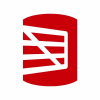Drift Reports in SQL Change Automation
SQL Change Automation's Drift Reports give you important insights into how your target database environment may have "drifted" -- before you deploy. In this video, we go from defining database drift into the internals of how the drift report works, then demo the three options you have to configure the drift report.
SQL Change Automation now has a new option for the drift report, 'ObjectsToBeUpdatedOnly'. This option filters the drift report so that it zooms in and reports ONLY on objects which are included in the current deployment. This option helps enterprise scenarios where multiple teams need to work in a busy shared development or testing environment, perhaps for a legacy monolith database.
Please note that this is applicable to SQL Change Automation projects only (not SQL Source Control projects).
For documentation on this topic, see:
- https://documentation.red-gate.com/display/sca4/Handling+Schema+Drift
- https://documentation.red-gate.com/display/sca4/New-DatabaseReleaseArtifact
00:00 Topics overview
00:36 What is database drift?
04:00 What is a database drift report?
06:28 Who is this useful for?
09:12 How the drift report works
10:54 Best practices for a first deployment
11:54 Why the snapshot is captured in the build process
14:06 How the drift report is generated on subsequent deployments
15:20 Drift report options on New-DatabaseReleaseArtifact
15:36 ModifiedObjectsOnly
17:18 AllObjects
18:06 ObjectsToBeUpdatedOnly
19:20 Why it's useful that this is an option on New-DatabaseReleaseArtifact
20:00 Dependency considerations with ObjectsToBeUpdatedOnly
20:47 Documentation on New-DatabaseReleaseArtifact
21:33 Demo: Running a build to start off
22:56 Demo: Overview of how I'm creating a release artifact
24:00 The "flavors" of drift I've created in my target database
26:23 Overview of Changes.html and Changes.json
27:03 Demo: Drift report with ModifiedObjectsOnly
28:25 Demo: Reporting drift with AllObjects
29:47 Demo: Reporting drift with ObjectsToBeUpdatedOnly

